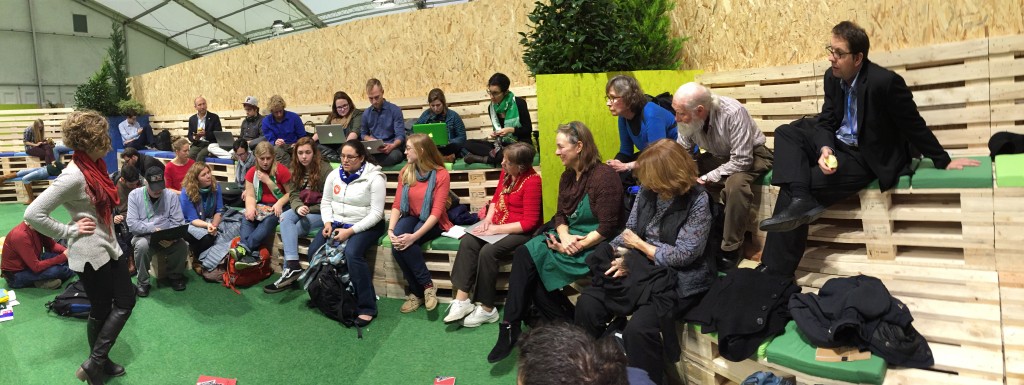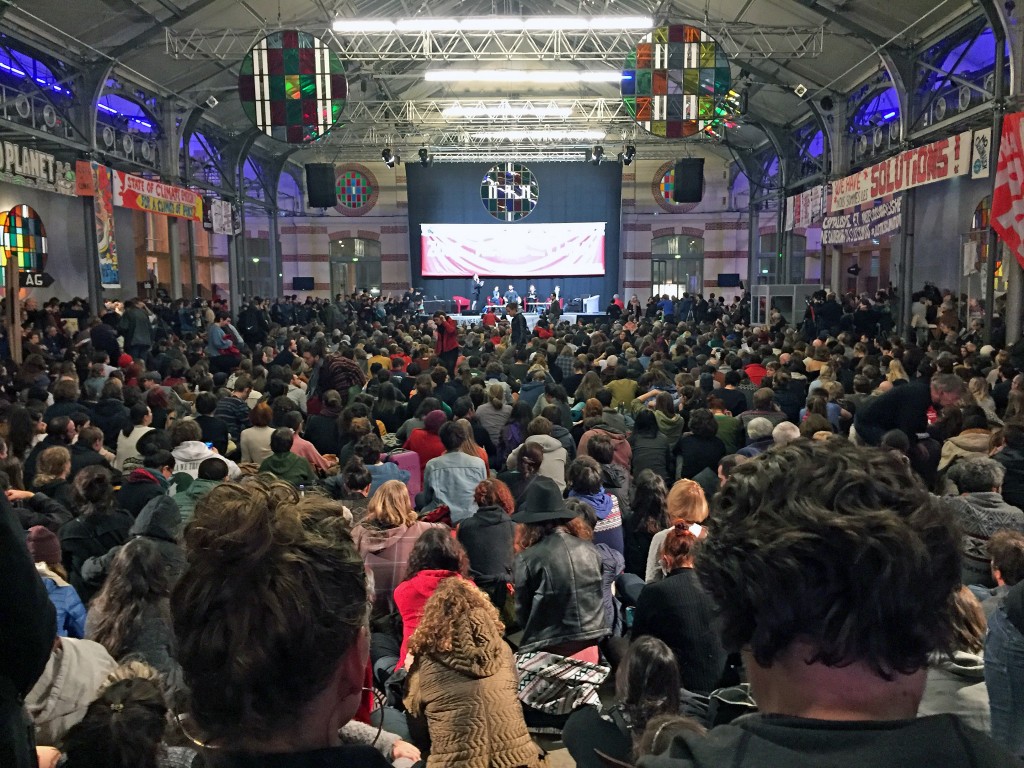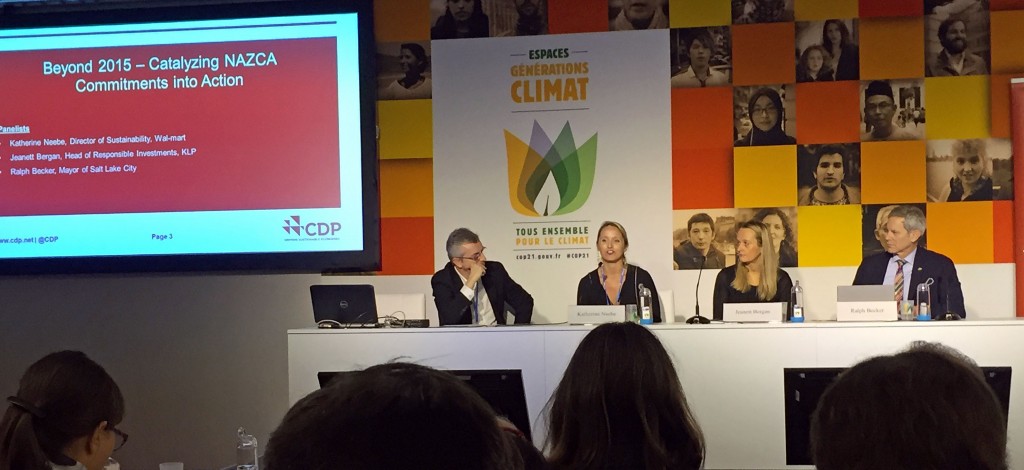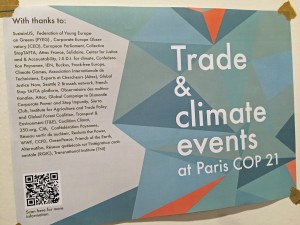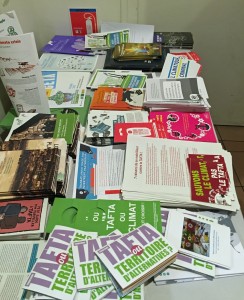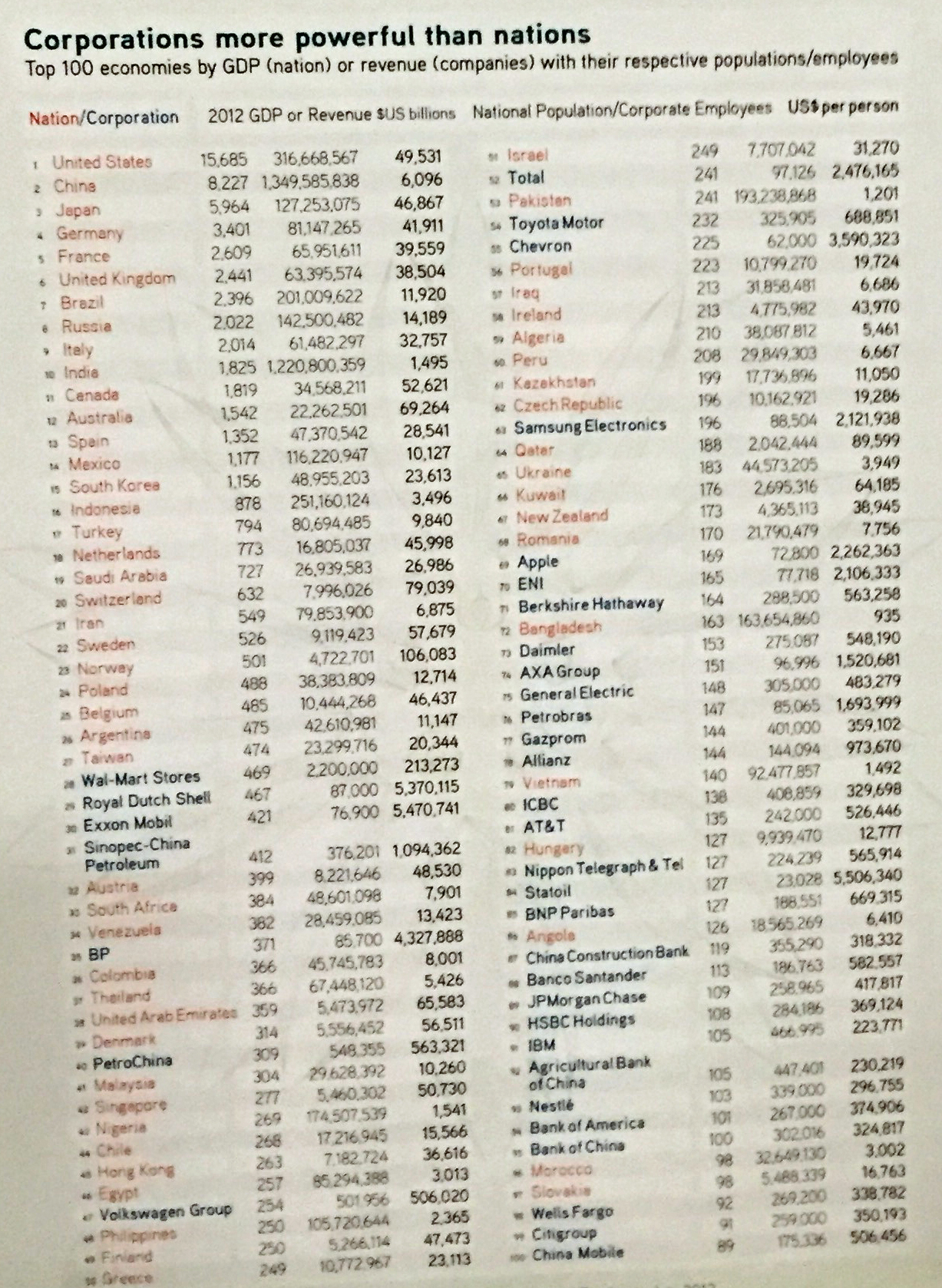I’ve now had a few more days to gather news and analysis about the Paris Agreement, and experts and commentators have had a few more days to supply it. In general most commentators seem pretty happy with the agreement. They acknowledge that it does not do everything that is needed, but they see it as the start of a new era in which we will transition to a new clean energy economy. There are exceptions to this assessment though; James Hansen called the Paris Agreement a “fraud” and some of my social media friends expressed disappointment. But these voices, at least from my vantage point, are the minority.
Here is some additional news and analysis:
The New York Times – Climate Accord is a Healing Step, if not a Cure, by Justin Gillis
The Guardian – The Paris agreement signals that deniers have lost the climate wars, by Dana Nuccitelli
The Conversation – Five things you need to know about the Paris climate deal, by Simon Lewis
The Economist – The Paris agreement marks an unprecedented political recognition of the risks of climate change
EurActive.com – Coal lobby chief: COP21 means ‘we will be hated like slave traders’
Salon – “It’s up to us”: Paris was in a celebratory mood at the end of the climate summit, but activists know it’s not a time to rest
Thomas Friedman – Paris Climate Accord is a Big, Big Deal
Meanwhile, discussion and debate about the Paris Agreement continued across the internet, including on my own Facebook page. Here is what one friend posted:
Many of us still don’t understand the level of enthusiasm for this agreement. Do you have a point-by-point analysis that explains this? I’m interested in things like the deadline for carbon emission neutrality and that there are no concrete limits to global emissions.
I am certainly not an expert, but I took this inquiry seriously and wrote the following lengthy response:
First on the agreement itself. You are right that it is not specific about some things, such as the carbon emission neutrality (it sets a goal of being carbon neutral sometime after 2050 but before 2100) and limits to each nation’s greenhouse gas emissions (it says pledges should reflect the “highest possible ambition” and countries should lower emissions “as soon as possible”). And none of this is legally binding.
I am sure you know the background to the Paris climate conference, but Brad Plumer at Vox has a good history here.
Basically, the tactic of trying to get countries to sign onto specific and legally binding targets for lowering carbon emissions has been tried for the last 20 years and has not worked. Kyoto failed because it required only developed nations to sign on, and Copenhagen failed because no one wanted the targets to be legally binding.
So this year, the world community tried a different approach of seeking voluntary commitments from every country. The momentum started in November 2014 when Obama forged an agreement with China setting meaningful targets for both countries to lower emissions. Since then, over the past year, almost every other country in the world has announced its own targets. This meant that once the climate conference rolled around in December, most of the work had already been done, and it was up to negotiators to craft an agreement with for how those pledges would be carried out over time and how wealthy countries would help poor countries cope with the effects of climate change and establish renewable energy industries for their citizens.
Also, as I am sure you know, all these pledges put together do not get us to the 2 degrees C limit of warming that past climate conferences have identified at the upper limit — much less to the 1.5C limit that many scientists have said is the most we can warm the planet without destabilizing the climate. Right now adding up all national pledges would get us to probably 2.6C, which is too high.
All that makes the agreement seem pretty weak, right? So here are some reasons why I think this agreement is historic.
— It is the first time a climate agreement covers all nations – not just developed nations. That means 195 nations had to agree to it — including the U.S., China, India, Saudi Arabia, and all the little island states. All of them are covered, and all agreed to it by consensus. So everyone has a stake in the outcome.
— The agreement includes a mechanism to review pledges and emissions every five years and ramp them up. This is crucial. No one expected the Paris Agreement to get emissions down to 2C, but the review mechanism allows countries to ramp up commitments over time. A lot of this is human psychology. Once an economy gets started down a certain path — toward renewable energy for example — people will find that it’s easier than they think — and ramping up commitments will look easier five or 10 years from now than if we tried to envision that while we are still stuck inside the fossil fuel infrastructure. We have a lot of work to do, but this agreement basically gives us the shove that we need to get started, and once we get started, momentum will help us keep going.
— Transparency requirements. Countries have to follow strong reporting requirements so that other countries can see what they are doing to lower emissions and if they are staying on track. There was a lot of resistance to this in the climate negotiations — China in particular didn’t want other countries poking around in its business. But Kerry and Obama got them and others to commit. Transparency will help ensure that peer pressure stays on all countries because everyone else will be watching.
No there are not penalties if a country reneges on its commitment, but really, even if it was legally binding, what could be done anyway? No one is going to send in an army to force a country to ramp up renewables. Legally binding or not, it is going to be done through peer pressure, with naming and shaming if a country doesn’t follow through. Such tactics are actually pretty powerful. Studies in social psychology show, for example, that the most powerful message to get someone to recycle is not that it helps the environment or that it saves money, but that everyone else is doing it. People generally want to stay within established norms, and that applies to countries on the world stage as well.
Also, with the deniers in Congress, there is no way we could have made the targets for lowering emissions legally binding. If we had tried, the agreement would have had to go before Congress for ratification, and it would have failed. That would not have helped anyone. Even committing a certain amount of money to the Green Climate Fund to help developing nations deploy renewables could have required it go to Congress, since Congress has the power under our consitution to allocate funds. So Obama and Kerry had to be very careful about how this was written so as to avoid sending the agreement to Congress to be killed.
Momentum really seems to be the name of the game here. Momentum started as every country over the past year started making its climate commitments. Then when we got to the conference itself, several unexpected things happened:
— First, more than 100 nations went on record as supporting a warming limit of not just 2C but 1.5C — even many developed economies such as the United States. This means these leaders understand the severity of climate change and what it means for the island nations that are being swallowed by sea level rise. Elizabeth May put it this way at a briefing with the Sierra Club: The difference between 1.5 and 2C is the difference between the Greenland and Antarctic ice sheets melting, the survival of island nations, and whether or not we destabilize the climate.
A target of 1.5C – at least in theory – is a huge commitment. We have already raised temperatures almost a degree since the Industrial Revolution, and we have almost a half degree locked in due to the long half-life of carbon. Leaders may not have thought all of that through when they publicly bought into a limit of 1.5, but they did so because it is the right thing to do. It will mean almost immediate transiton from fossil fuels to renewables — but there is evidence that people are ready to make that switch.
— Second, a group of over 1000 mayors from five continents signed onto an agreement to transition to 100 percent renewable energy in their communities by 2050. This is huge because cities and local areas are where the rubber meets the road. This is the arena where the most actual lowering of carbon emissions can take place. The level of cities is small enough to be manageable but large enough to make a difference, especially when so many of them are moving in the same direction. And to have so many city leaders ready to go carbon neutral by 2050 is huge. It goes way beyond the requirements of the Paris Agreement, and it shows how, in the words of Francois Holland the agreement is a floor, not a ceiling.
— Finally three different groups of international investors announced major investments in research, development, and deployment of clean energy in both developed and developing nations (Mission Innovation, Breakthrough Energy Coalition, International Solar Alliance). Again this goes beyond the requirements of the agreement – yet it would not be happening if the agreement did not exist. Such major funding will itself have spin-off effects, with innovations spurring more innovation as companies and industries do not want to be left behind. It is crucial that business and industry as well as government be on board with the transition from fossil fuels to renewables, and these announcements shows that they are, even though they are not covered by the Paris Agreement.
One other point about this agreement. In past climate conferences, the deniers were always working hard to undermine it with front groups and lies. Just before Copenhagen was when they launched Climategate after hacking into climate scientists’ emails, which helped derail that treaty. This year, however, they were not effective. Lamar Smith has been harassing NOAA scientists in an effort to get their emails for a replay of Climategate, but it hasn’t worked. The Heartland Institute held a press conference in Paris featuring the usual cast of characters, and no one showed up. Basically, the world ignored the deniers and moved on. The deniers have become irrelevant.
For all these reasons, I feel like the Paris Agreement is larger than its individual parts. Although it doesn’t say so in the text, the agreement has basically signalled to the world that the era of fossil fuels is over. It is hard to overstate how significant this is. Many commentators said the real importance of the agreement is in signalling markets and investors to move away from fossil fuels and into renewables. And the crazy thing is how fast this is happening.
Just today I have been hit with three different news stories showing these changes in action. First NPR had a story about how business at the Tar Sands has slowed down so much that it’s likely most of the oil will stay in the ground. The reporter used that phrase at least three times. Second, Ford announced a major investment in a new line of electric vehicles. They would not be doing that if they didn’t think this is the way the world is moving, and they wanted to get on board quickly.
Finally, in my home state of Ohio, AEP, a major utility powered mostly by coal, announced an agreement with the Sierra Club by which they will phase out most (possibly all) of their coal plants in the state, and instead will invest in wind and solar, creating a lot of jobs, especially in the poor Appalachian part of the state. This is a 180 degree turn for this company, which once literally bought out all the residents of a town so that they would not have to clean up the pollution from their nearby coal plant.
Basically, I think the Paris Agreement represents a turning point in history. Is it enough by itself to solve climate change? No it is not, and not single document could be. But it has completely changed the circumstances and momentum of the debate. It gives us a huge tool to use in getting government and industry on board, holding them accountable for their current commitments, and demanding that they do more. Just the support from so many nations for 1.5C gives us a major bargaing chip.
No, activists cannot simply disband and go home. We have to see this through and hold them to their commitments. But I think the atmosphere in which we will be working has now completely changed, and that even if the Paris Agreement itself is not specific about numbers and timelines, other things that governments and industries have said as a result of negotiating this agreement are much more specific, and that we now have the tools needed to hold them to their word and make the new economy happen.







